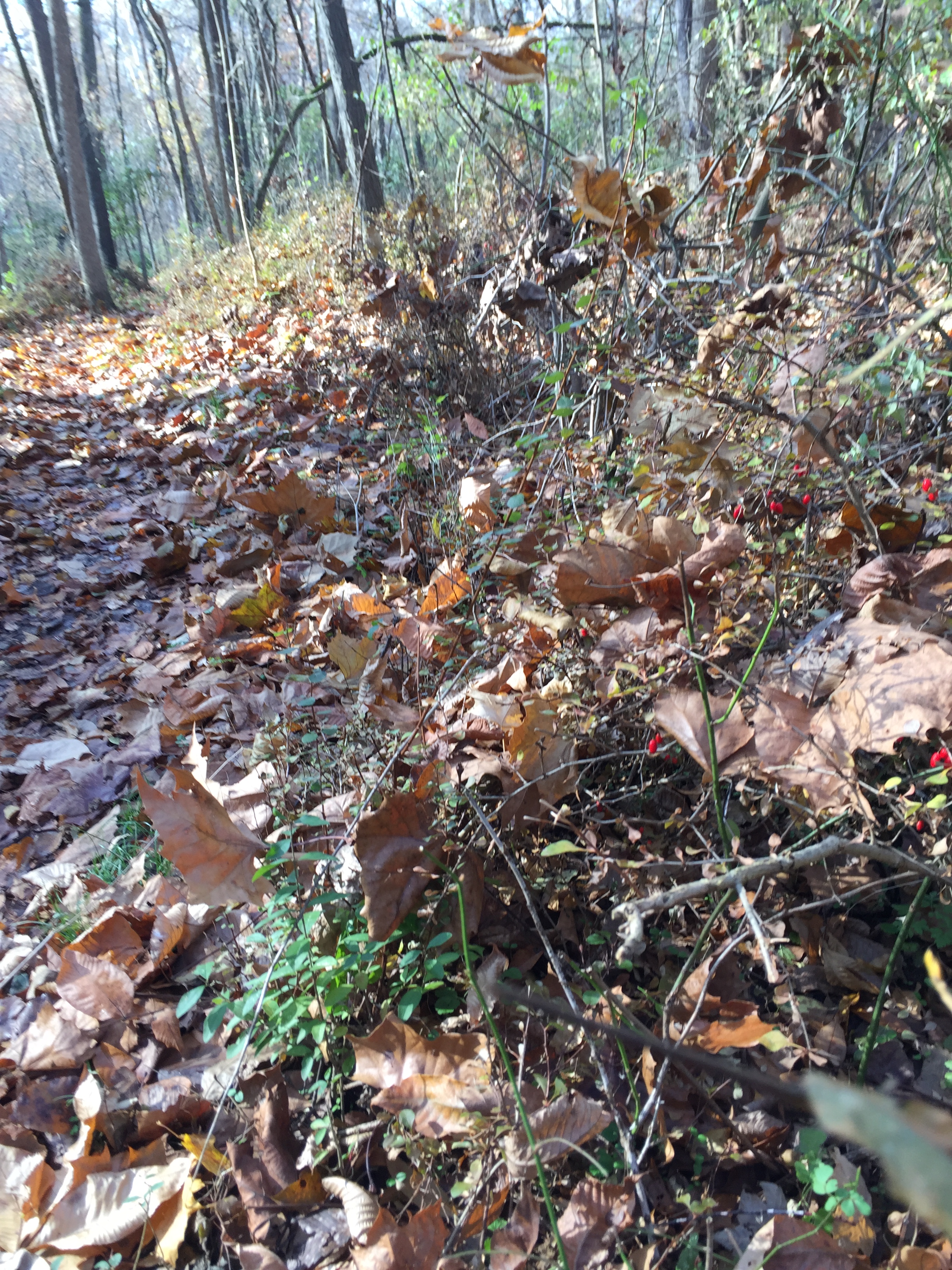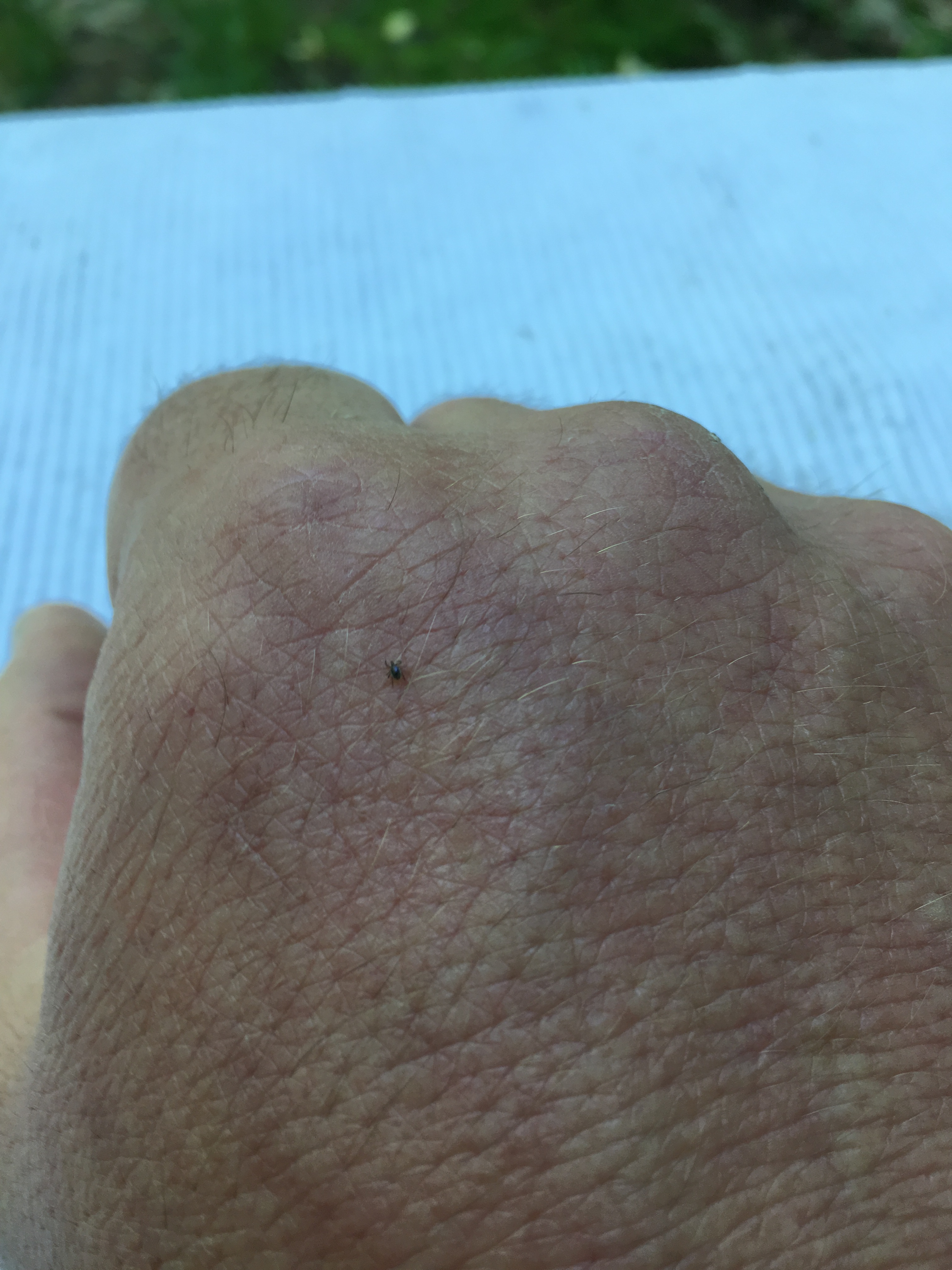Common name: Blacklegged tick
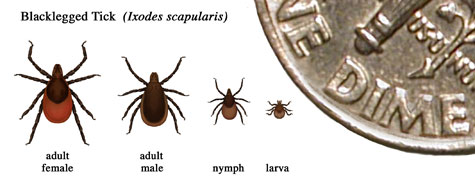
Graphic: Centers for Disease Control and Prevention.
- Geographic Distribution
Blacklegged ticks are present in most Indiana counties and widely distributed in the Northeastern and upper Midwestern United States. These ticks are most encountered in wooded environments. Click here to see the geographic distribution of ticks that bite humans in the United States.
To see where blacklegged ticks have been detected, visit the Indiana Tick-borne Disease Surveillance dashboard and select "Lyme disease" from the disease dropdown menu.
- Life Cycle
In Indiana, nymphs are most active during spring and summer and adults are most active during the fall and early spring. However, adult ticks may be active any time winter temperatures are above freezing. The blacklegged tick life cycle consists of four stages (egg, larva, nymph, and adult) and usually takes two years to complete. At each stage, the tick must have a blood meal in order to molt and develop to the next stage. Both nymphs and adults can feed on humans and are capable of transmitting disease.
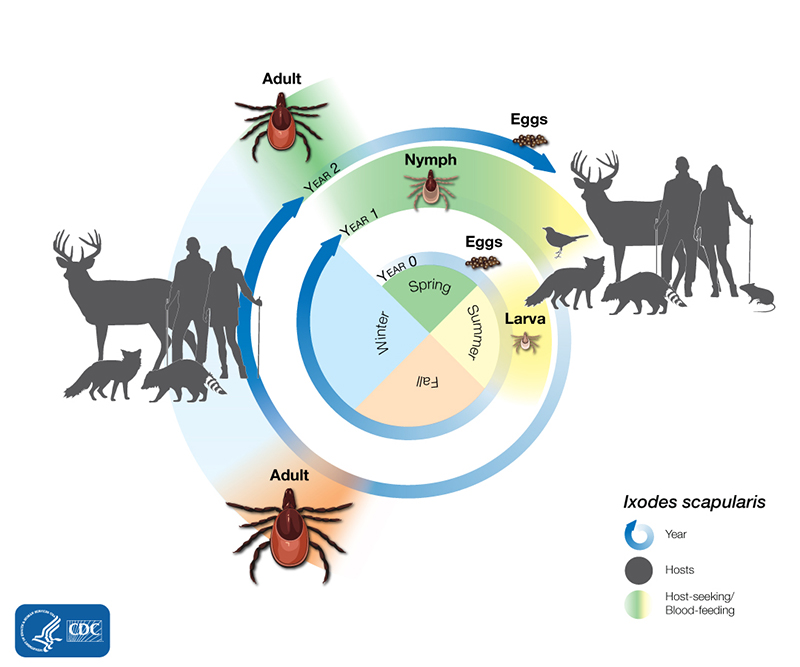
The life cycle of the blacklegged tick (Ixodes scapularis). Graphic: Centers for Disease Control and Prevention.
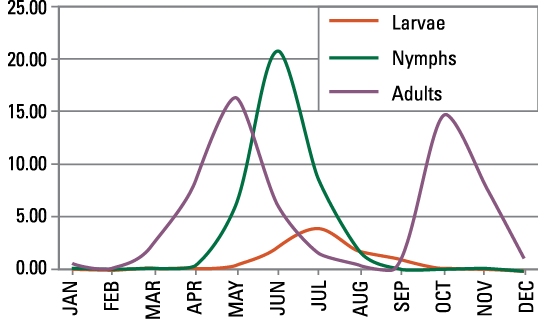
Seasonal Activity of the blacklegged tick. Graphic: Midwest Center of Excellence.
- Commonly Associated Diseases
- Prevention
The best way to prevent diseases associated with blacklegged ticks is to avoid tick bites. Please see our tick prevention page for more information.
For more information about blacklegged ticks, please visit the Midwest Center of Excellence in Vector-Borne Disease.
- Images
Blacklegged tick (Ixodes scapularis) wooded habitat. Photo: Indiana Department of Health
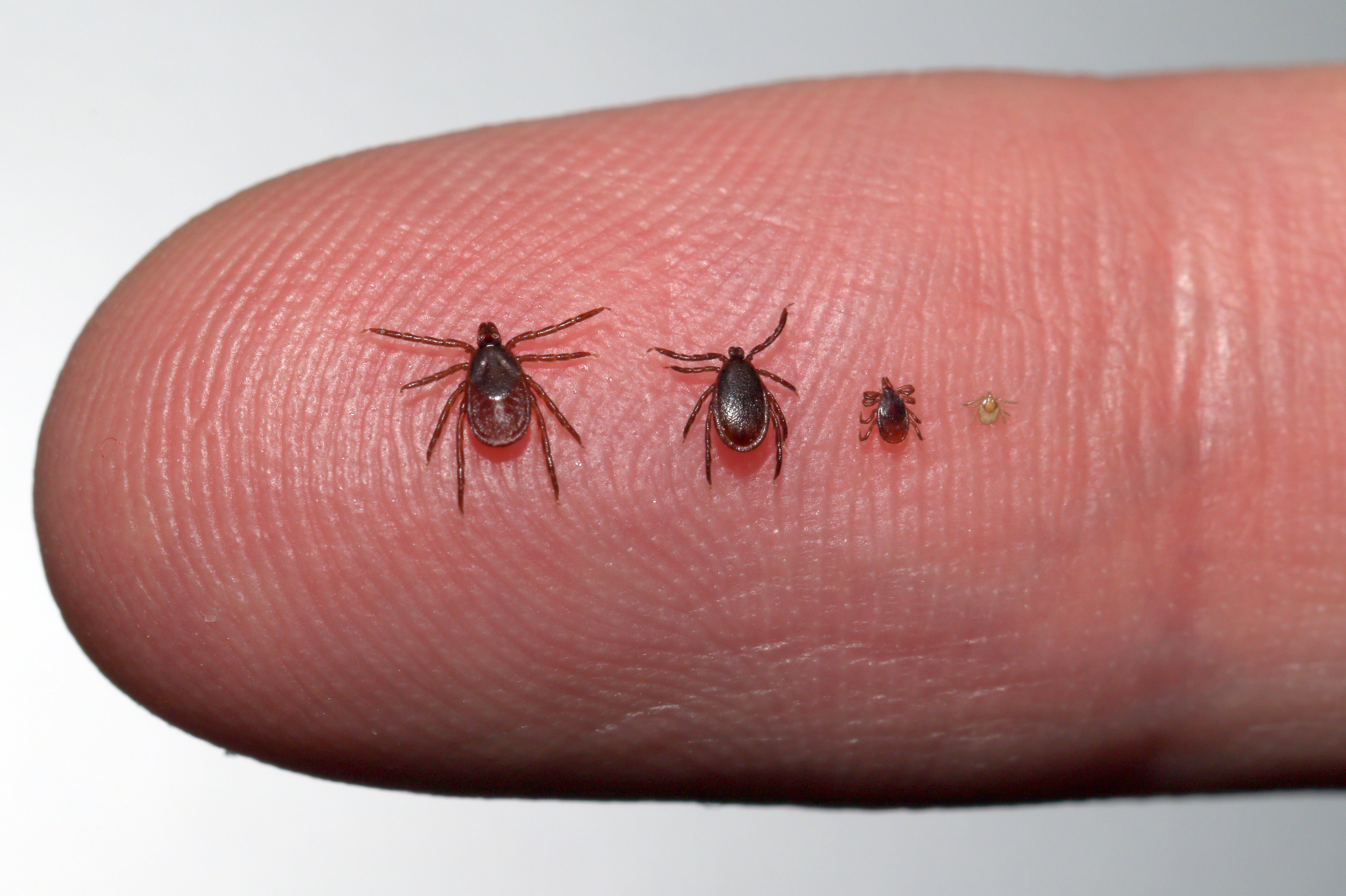
Ixodes scapularis on finger. Left to right: Adult female, adult male, nymph, larva. Photo: Bryan Price, Indiana State Department of Health.
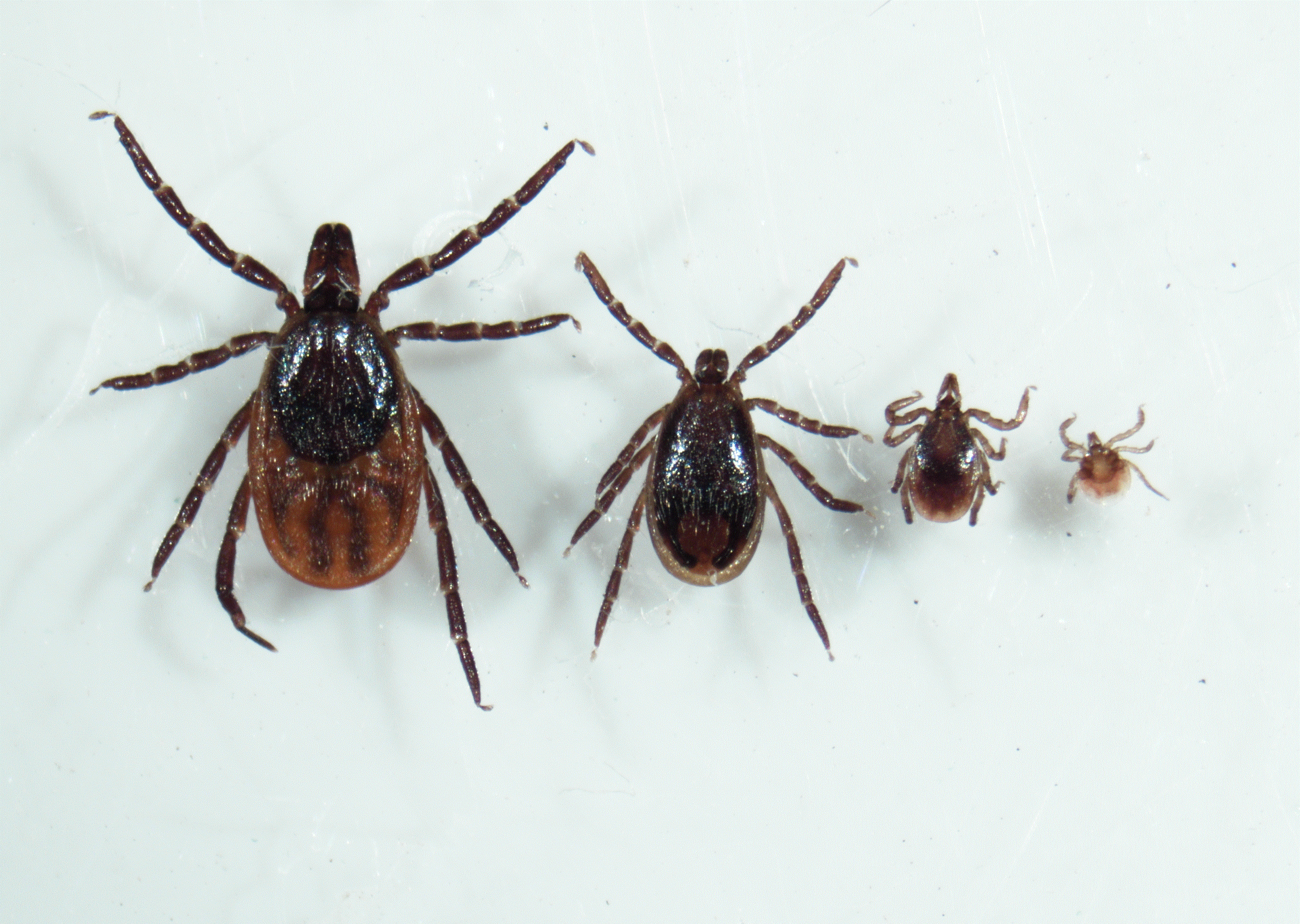
Ixodes scapularis magnified. Left to right: Adult female, adult male, nymph, larva. Photo: Lee Green, Indiana Department of Health.
Ixodes scapularis nymphs are extremely small and may be difficult to see, as depicted in this photo of a nymph on the back of a human hand. Photo: Lee Green, Indiana State Department of Health.
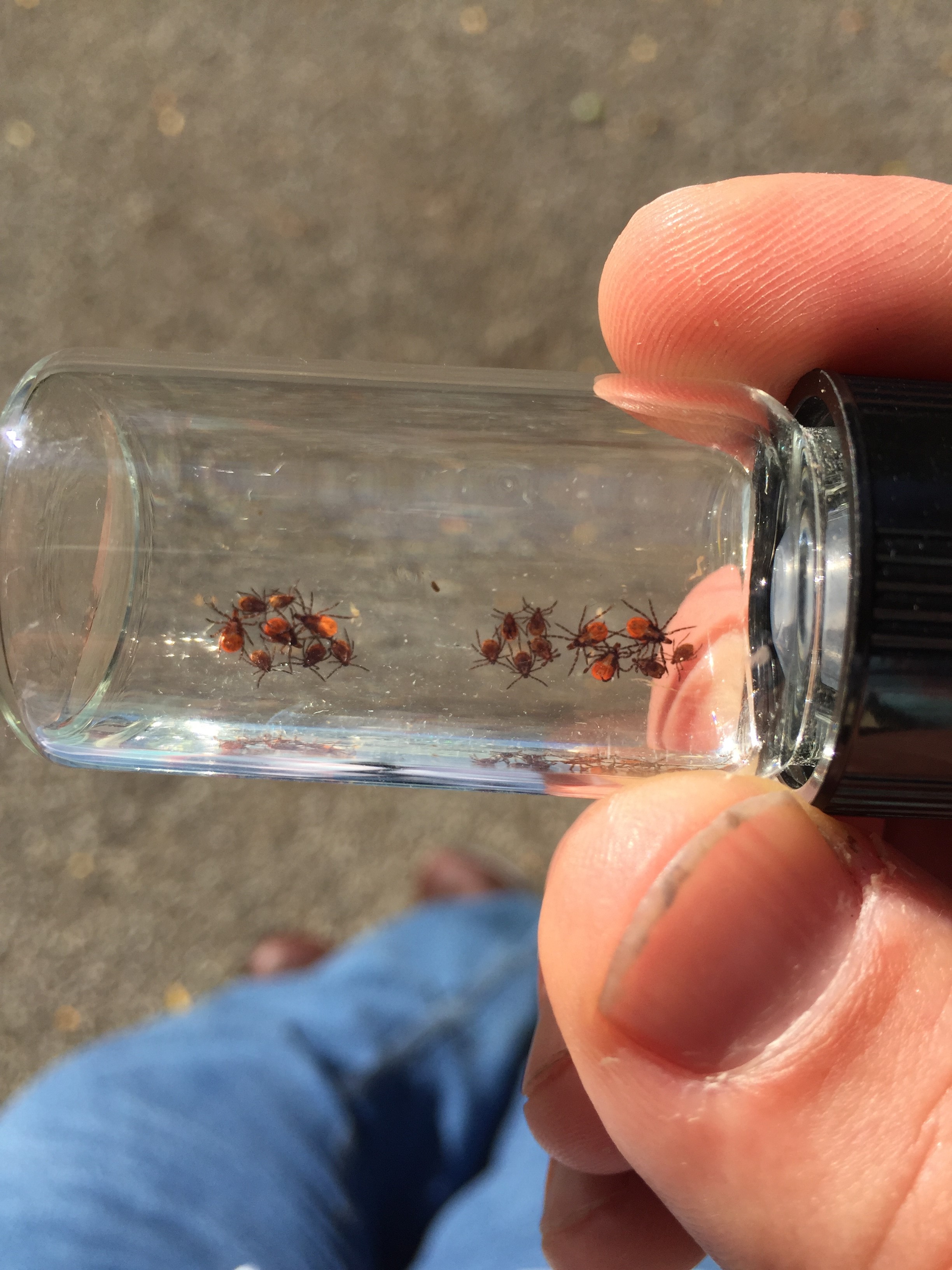
Ixodes scapularis ticks. Photo: Lee Green, Indiana Department of Health.
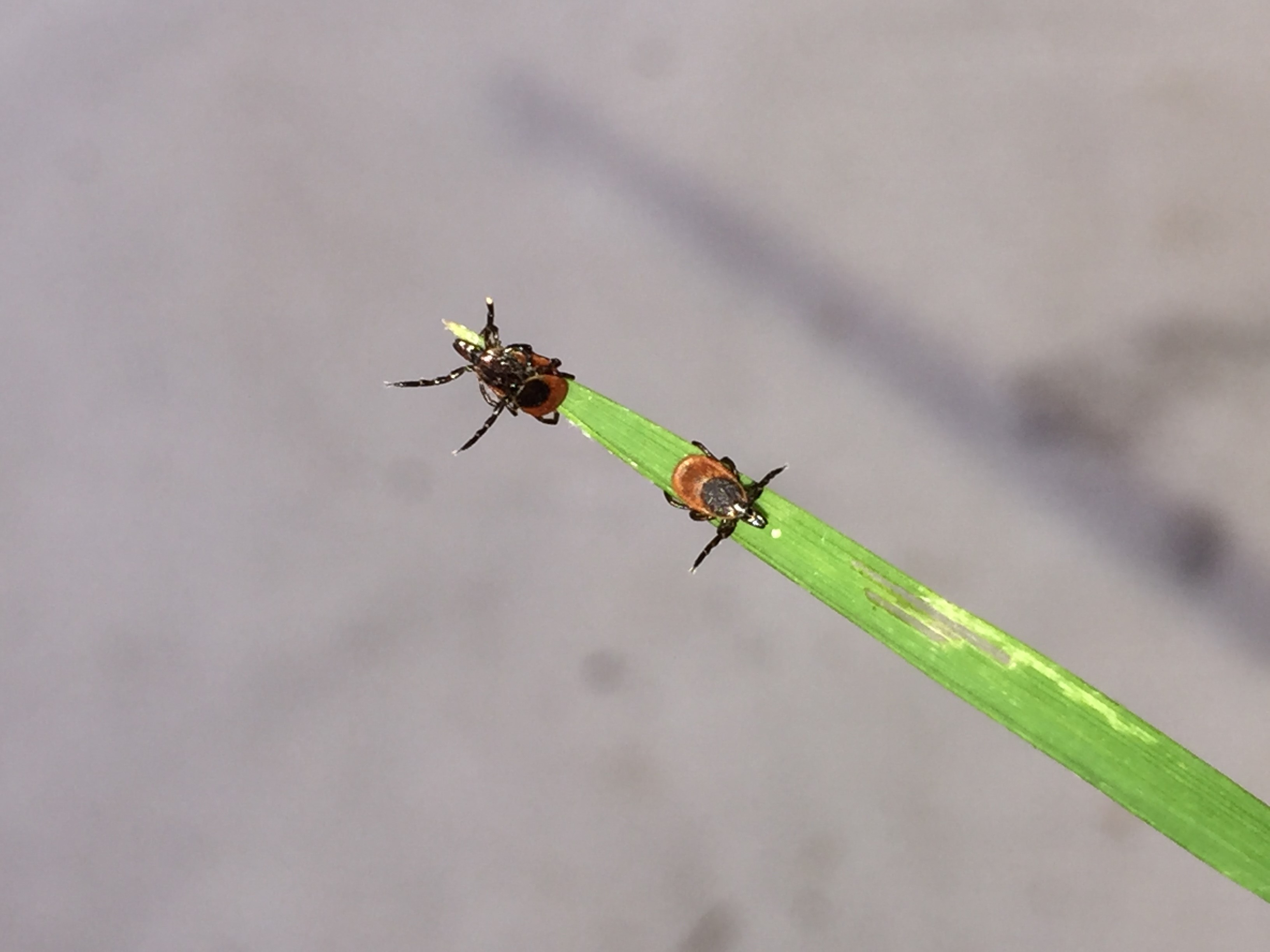
Questing adult Ixodes scapularis ticks. Photo: Lee Green, Indiana Department of Health
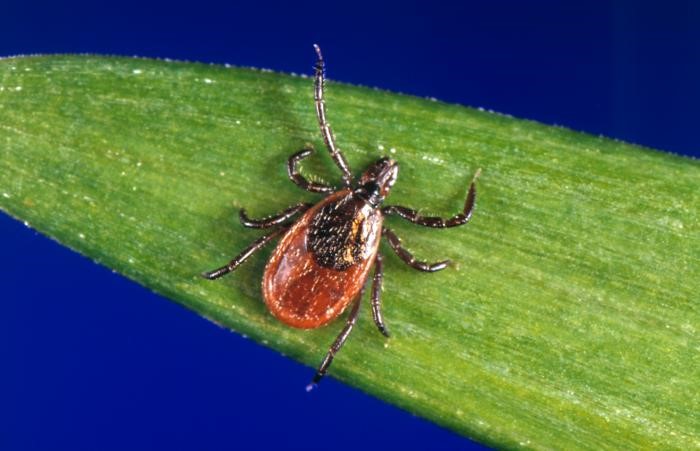
Blacklegged tick (Ixodes scapularis). Photo: James Gathany, Centers for Disease Control and Prevention.
Page Last Reviewed/Updated: March 2025


